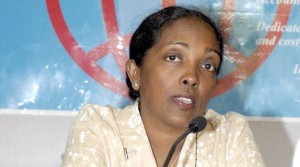By MAIMBOLWA MULIKELELA-
ZAMBIA will continue recording higher economic growth rates which will largely be driven by massive copper investments and high domestic demand for goods, the World Bank has said.
In its third Zambia Economic Brief (ZEB) launched in Lusaka yesterday, the World Bank stated that the country was on course for higher economic growth rates.
“The medium-term outlook is for growth to stay robust, supported by domestic demand and the global recovery, but with real downward risks.
Real Gross Domestic Product (GDP) growth is projected to increase from an estimated 6.4 per cent in 2013 to 6.5 per cent in 2014 and to stabilise around 6.5 per cent in 2015-16,” the report stated.
The third ZEB is themed- Promoting trade and competitiveness: What can Zambia do?
The report, however, outlined the changing external conditions, declining copper prices, the tightening of international financial conditions, which are likely to lead to higher borrowing costs; volatile portfolio inflows are growing risks that could lower investment and growth.
Further, the report said Government should strengthen its capacity to identify suitable projects, manage its debt portfolio and develop a medium term debt management strategy in light of its rapidly changing debt situation.
Speaking at the launch of the third ZEB, World Bank country director for Zambia, Malawi and Zimbabwe, Kundhavi Kadiresan said it was of great importance for Zambia to maintain this direction to consolidate its fiscal position, in the face of difficult choices that lie ahead.
“The country needs to take a closer look at its public investment programme to ensure good value for money through project appraisal,” Dr Kadiresan said.
On the promotion of trade and competitiveness in Zambia, the report said Zambia was doing generally doing well on exports, saying that non-copper merchandise exports grew by 22 per cent per annum from 2002 to 2012 and copper exports stood at 27 per cent.
Dr Kadiresan expressed concern that the gains in the growth exporters were often transient and firms exit the export market nearly as soon as they enter it.
The report further notes that trade also plays an important role for the poor, adding that if Government focuses on poverty reduction, it was important to consider the small traders that make a living out of cross border trade.
Speaking at the same function, Finance Minister, Alexander Chikwanda said Zambia had continued to post favourable growth in the last three years with the GDP projected at around 6.4 per cent in 2014.
Mr Chikwanda said the economic brief would provide useful information to the public on the country’s economic activities and this would help Zambia remain among the 10 fastest growing economies in the world and among the fourth in the sub-Saharan Africa.
“The assessment of our economy as provided in the brief on economic performance and the outlook raises both hope as I have just highlighted and challenges to be addressed going forward,” he said.
In a speech read for him by Secretary to the Treasury, Fredson Yamba, Mr Chikwanda said the diversification efforts were already bearing fruit with the strong growth being recorded in non-traditional exports of about 23 per cent in 2013.
“Overall, all non-traditional exports now account for 33 per cent of export earnings up from 13 per cent in 2008,” Mr Chikwanda said.
The minister said the World Bank had remained a strong partner in the diversification efforts and mitigating high poverty levels.







